The Confluence of Wisdom Along the Silk Road. Omar Khayyam’s Transformative Poetry. Mostafa Vaziri. [S.l.] : Vernon Press, 2021. 208 p. ISBN: 9781648893162.
For centuries along the vibrant cultural corridor of the Silk Road of Central Asia, philosophers and thinkers from Hellenic, Chinese and Indian traditions debated existential issues. Out of this stimulating milieu, the iconic poet-mathematician Omar Khayyam emerged in the eleventh century, advancing a transformative intercultural philosophy in his poetic work, the Rubaiyat.
Vaziri traces the themes of Khayyam’s Rubaiyat back to the highly influential philosophical traditions of the Silk Road and uncovers fascinating parallels in original works by Heraclitus, Zhuangzi (Daoism), Nagarjuna (Mahayana Buddhism), and the Upanishads. In addition, Vaziri’s elegant translation and unique classification of the verses of the Rubaiyat reveal an existential roadmap laid out by Khayyam.
In this pioneering volume, Vaziri not only fuses the multiple disciplines of literature, philosophy, culture, history and medicine but also takes the approach of the Rubaiyat to a new level, presenting it as a source of wisdom therapy that stands the test of time in the face of doubt and confusion, offering a platform for self-restoration.
Contents
- List of Figures
- Prelude
- Part I: Interwoven Philosophies of Life
- Chapter 1 A Nexus of Wisdom on the Silk Road
- Chapter 2 Life is Like a River: Heraclitus and Khayyam
- Chapter 3 The Liberated Drunkard: Daoism and Wine in the Rubaiyat
- Chapter 4 Self-Rule, Joy and Emptiness: The Bedrock of the Buddhist and Khayyamian Paths
- Chapter 5 The Immortal Clay: An Echo of the Chandogya Upanishad in Khayyam’s Allegory
- Part II: Therapeutic Approach: Four Essays
- Chapter 6 Poetry-Philosophy as Medicine: A Historical Background
- Chapter 7 The Entrapped Mind and Psychosomatic Alarms
- Chapter 8 Wisdom Therapy and Khayyam’s Poetry
- Chapter 9 Khayyamian Thought as a Psychological Alternative
- Conclusion
- Part III: The Quatrains
- Chapter 10 The Flow of the Rubaiyat: New Translation and Classification
- Bibliography
- Index
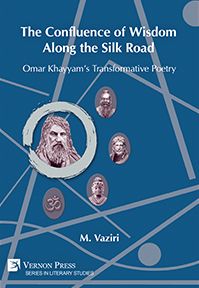
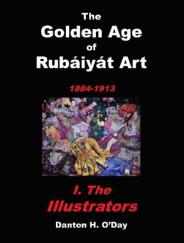
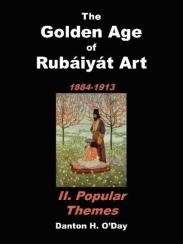
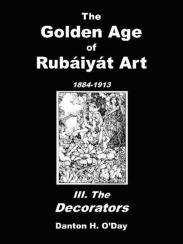
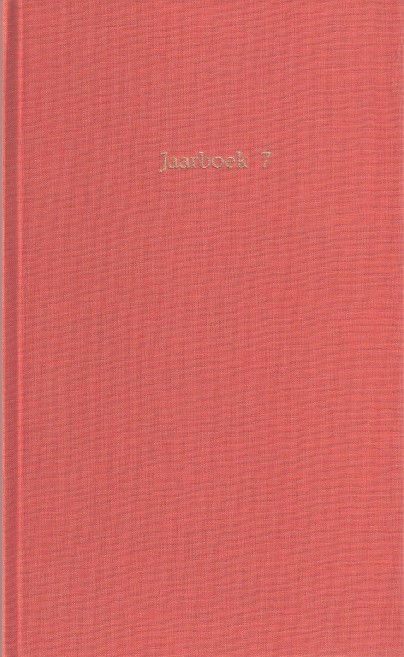 Jaarboek 7. 25 jaar Genootschap is now published, as always by Avalon Pers, Woubrugge. The book contains a number of shorter articles in which the members of the Club look back onto their membership. Jos Biegstraaten, president from 1990 till 2014, presents a short history of the Society. Hans de Bruijn ponders on the eternal and unanswered questions surrounding the origins of the rubáiyát. Jos Coumans explains how and why he started to collect the editions of the rubáiyát. For Marco Goud the exploration of life and work of the Dutch poet P.C. Boutens leads to confrontations with Khayyám’s influence on Boutens’ work he cannot evade. Rokus de Groot first encountered Khayyám’s poetry in the leather workshop of Stavros Melissinos in Athens, who presented him with a signed copy of his ‘Persian Rubáiyát’. Johan ter Haar is fascinated by the diversity of interpretations of Khayyám’s poetry that range from pure mysticism to sheer nihilism, and Remi Hauman looks at the rubáiyát as a collective, national oeuvre by various Persian ghostwriters, with international dimensions. For Dirk Meursing the Society was a useful and joyful resource while working on his own translation, and Asghar Seyed-Gohrab, now president, remembers how in his youth in Tehran he was fascinated by the secrets and mysteries that Khayyám’s verses seemed to conjure. Jos Biegstraaten finally describes how Khayyám influenced the work of the Dutch graphic artist Siep van den Berg.
Jaarboek 7. 25 jaar Genootschap is now published, as always by Avalon Pers, Woubrugge. The book contains a number of shorter articles in which the members of the Club look back onto their membership. Jos Biegstraaten, president from 1990 till 2014, presents a short history of the Society. Hans de Bruijn ponders on the eternal and unanswered questions surrounding the origins of the rubáiyát. Jos Coumans explains how and why he started to collect the editions of the rubáiyát. For Marco Goud the exploration of life and work of the Dutch poet P.C. Boutens leads to confrontations with Khayyám’s influence on Boutens’ work he cannot evade. Rokus de Groot first encountered Khayyám’s poetry in the leather workshop of Stavros Melissinos in Athens, who presented him with a signed copy of his ‘Persian Rubáiyát’. Johan ter Haar is fascinated by the diversity of interpretations of Khayyám’s poetry that range from pure mysticism to sheer nihilism, and Remi Hauman looks at the rubáiyát as a collective, national oeuvre by various Persian ghostwriters, with international dimensions. For Dirk Meursing the Society was a useful and joyful resource while working on his own translation, and Asghar Seyed-Gohrab, now president, remembers how in his youth in Tehran he was fascinated by the secrets and mysteries that Khayyám’s verses seemed to conjure. Jos Biegstraaten finally describes how Khayyám influenced the work of the Dutch graphic artist Siep van den Berg.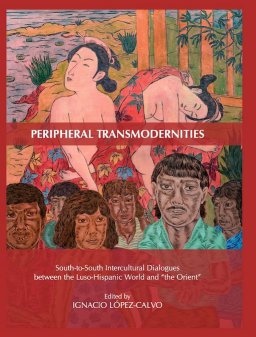 In “Otras inquisiciones, 1937-1952” (1952) the famous Argentinian author Jorge Luis Borges published a short essay “El enigma de Edward FitzGerald”, in which he suggests that Omar might be reincarnated in Edward FitzGerald. In his earlier work “Inquisiciones” (1925) Borges also wrote a short essay called “Omar Jaiyám y FitzGerald” in which he refered to a translation to Spanish of a number of quatrains of Omar Khayyám by his father, Jorge Guillermo Borges (1874-1934). This reference to his father was left out in the later Inquisiciones of 1952.
In “Otras inquisiciones, 1937-1952” (1952) the famous Argentinian author Jorge Luis Borges published a short essay “El enigma de Edward FitzGerald”, in which he suggests that Omar might be reincarnated in Edward FitzGerald. In his earlier work “Inquisiciones” (1925) Borges also wrote a short essay called “Omar Jaiyám y FitzGerald” in which he refered to a translation to Spanish of a number of quatrains of Omar Khayyám by his father, Jorge Guillermo Borges (1874-1934). This reference to his father was left out in the later Inquisiciones of 1952.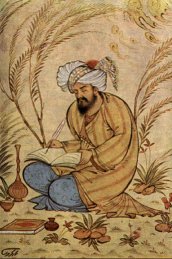 The Library of Congress opened an exhibition on March 29, titled “A Thousand Years of the Persian Book”. Purpose of the exibition is to take visitors on a visual journey of the rich literary history of Persian language, and to explore works of religion, science, modern literature, children’s books, women’s literature and the highly illustrated masterpieces of classical poetry for which Persian literature is most famous.
The Library of Congress opened an exhibition on March 29, titled “A Thousand Years of the Persian Book”. Purpose of the exibition is to take visitors on a visual journey of the rich literary history of Persian language, and to explore works of religion, science, modern literature, children’s books, women’s literature and the highly illustrated masterpieces of classical poetry for which Persian literature is most famous.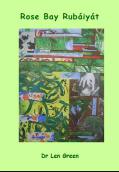 background of Khayyám’s poetry. He also published some paraphrases, written by himself. The book Rose Bay Rubaiyat has been published not for profit, and with appropriate authorization it is currently available for sale in support of Médecins Sans Frontières – Doctors Without Borders.
background of Khayyám’s poetry. He also published some paraphrases, written by himself. The book Rose Bay Rubaiyat has been published not for profit, and with appropriate authorization it is currently available for sale in support of Médecins Sans Frontières – Doctors Without Borders.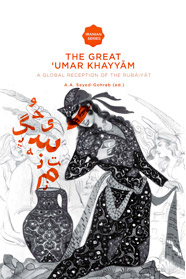 The book The Great ’Umar Khayyam, which consists of 18 essays about Khayyam’s influence, shows that traces of Khayyam can be found throughout Western literature and culture. Dutch poets such as Leopold and Boutens were inspired by him, for instance, but the quatrains also made their mark in 20th century painting and music.
The book The Great ’Umar Khayyam, which consists of 18 essays about Khayyam’s influence, shows that traces of Khayyam can be found throughout Western literature and culture. Dutch poets such as Leopold and Boutens were inspired by him, for instance, but the quatrains also made their mark in 20th century painting and music.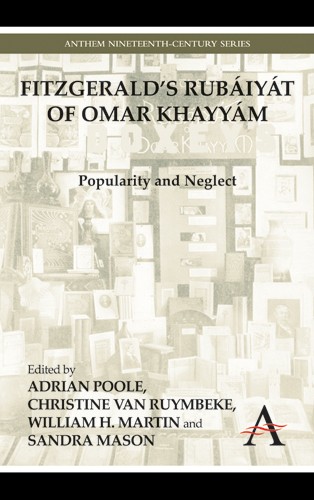 This title from Anthem Press, edited by Adrian Poole, Christine van Ruymbeke, William H. Martin and Sandra Mason, was initially published in 2011, but is now available as Ebook.
This title from Anthem Press, edited by Adrian Poole, Christine van Ruymbeke, William H. Martin and Sandra Mason, was initially published in 2011, but is now available as Ebook.